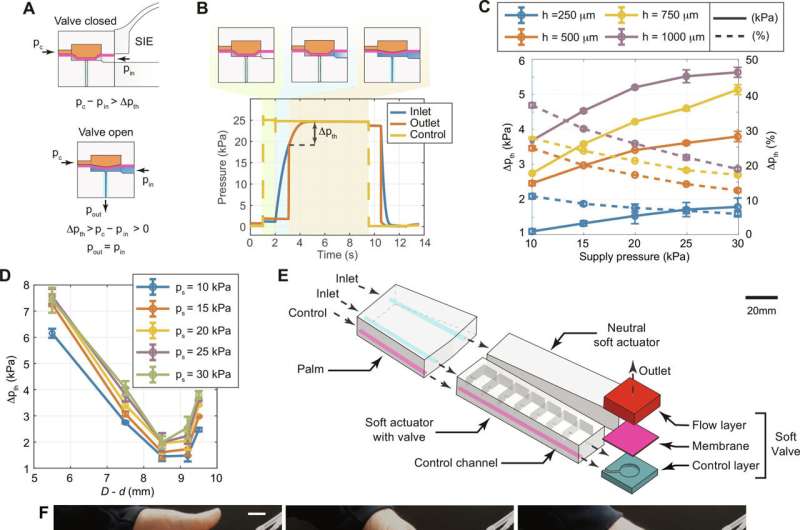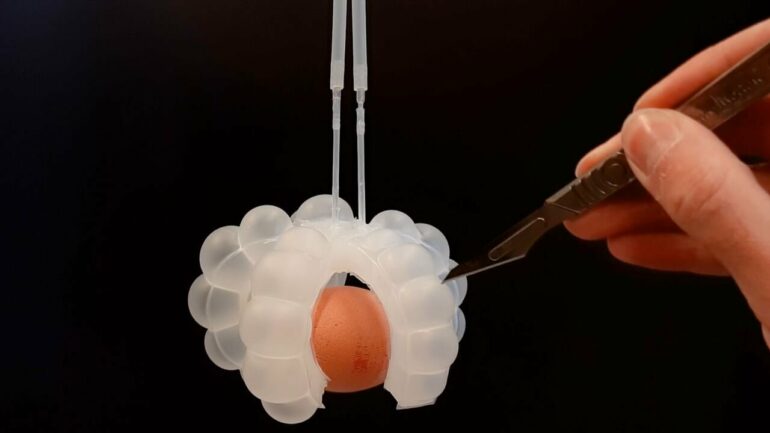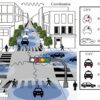A new type of valve that makes soft robots more resilient to damage, has been developed by engineers at the University of Sheffield.
Reported in Science Robotics and developed by Dr. Marco Pontin and Dr. Dana Damian from the University’s School of Electrical and Electronic Engineering, the new valve can automatically isolate damaged parts of a robot from the rest of the system. This prevents damage from spreading and allows the robot to continue functioning.
Soft robots are made from flexible materials that can bend and deform. This makes them well-suited for tasks that would be difficult or dangerous for traditional robots, such as working in delicate environments or interacting with humans. However, their flexible materials make them more susceptible to damage.
The valve works by using air pressure to control the flow of fluids through the robot. It can be used in two different modes:
Forward operation mode: In this mode, the valve can isolate a punctured section of the robot in as little as 21 milliseconds. This prevents the leak from causing further damage and allows the robot to continue operating.
Reverse operation mode: In this mode, the valve can protect the robot from overpressurization, which can cause the robot to burst.
The valve can also be used in a combined mode that allows the robot to adjust its own internal pressure and thus autonomously set itself up to isolate a burst. It is small and lightweight and can be easily integrated into existing soft robot designs. This makes it a promising solution for improving the resilience of soft robots and expanding their potential applications.

ROM behavior characterization and demonstration. © Science Robotics (2024). DOI: 10.1126/scirobotics.adk9978
Dr. Dana Damian, Senior Lecturer at the University of Sheffield, said, “Soft robots carry the promise of being able to operate and work in the proximity of humans or inside humans as medical tools, and their resilience to faults is a primary feature of their adoption.
“The resilience mechanism we have come up with is suitable not only to extend these robots’ operation lifetime but also to reduce their size, complexity, and cost because fault isolation or prevention is triggered passively in our valve by the fault itself. The intelligence of these soft robots is embedded in their body structure, which is what we call embodied intelligence.”
Dr. Marco Pontin, Research Assistant in Soft and Resilient Machines at the University of Sheffield and a Postdoctoral Researcher at the University of Oxford, said, “Resilience is crucial for the self-preservation of biological systems. Our new valve mimics this in soft robot technologies by giving them a way to respond to damage and protect themselves passively.”
More information:
Marco Pontin et al, Multimodal soft valve enables physical responsiveness for preemptive resilience of soft robots, Science Robotics (2024). DOI: 10.1126/scirobotics.adk9978
Provided by
University of Sheffield
Citation:
Engineers design new valve to give soft robots resilience boost (2024, July 25)



